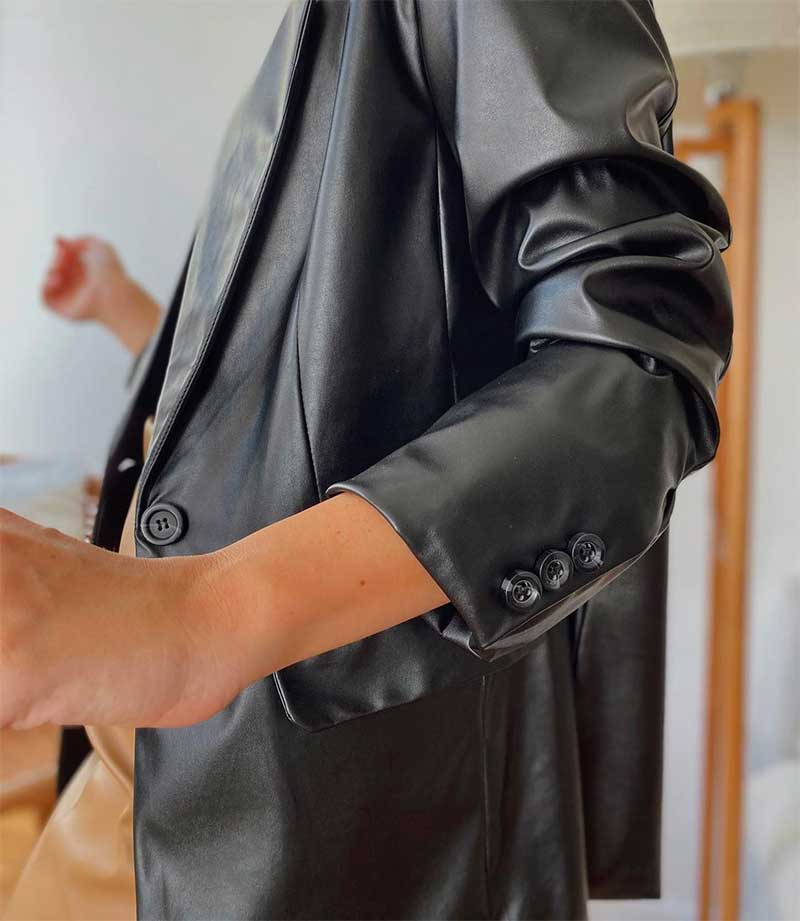
Incorporating leather into clothing is a game of give and take. The proper amount of leather applied to the right spots can completely change a dress or shirt’s style and statement, for better or worse.
Leather is usually reserved for high-class clothing as a result, but you can add it to anything you wish with enough practice. Here are seven tips to help dressmakers use leather tastefully and make the most of each stitch.
You could try to sew with leather using your customary tools, but the process will go more smoothly if you acquire some leather-specific materials. Add these items to your checklist if you don’t already have them:
- Presser feet
- Leather needle for the machine, Glover’s needle for handiwork
- 100% polyester thread
- Two-sided adhesive tape
- Rotary cutter
- Wax chalk
- Rubber mallet
- Cold tape
Leather is a rugged material that sometimes requires a little more elbow grease and stronger tools to handle. These items – especially the first three – will set you up for success.
2. Lengthen Your Stitches
Since leather is thicker than most materials, you need to lengthen your stitches to avoid puncturing the leather too closely together. Leave long threads at the beginning and end of each seam so you can tie them off by hand.
You will notice that sewing the leather is quite similar to other fabrics if you lengthen and space your stitches correctly.
3. Don’t Be Afraid of Skipped Stitches
Skipping stitches is one of the most common mistakes people make when working with leather, but it’s not the end of the world. Sometimes the problem isn’t you, but the materials you’re using. Just switch out your leather needles, use a thicker thread and consider changing your presser foot.
If you’re having trouble in specific areas like seam intersections, buy a hump jumper to help you sew even seams. If you still skip, just finish your machine stitching and go back to fix the mistakes by hand. Anchor the needle between the garment layers and bring it through the first skipped hole. Then, pass the needle over the floating thread that was skipped, guide it back through the hole and pull it tight.
4. Use a Variety of Leather Materials
To get better at sewing leather, you should use leather materials with different grains and unique capabilities. We don’t just mean full-grain, top-grain and the other standard types. You should look for more luxurious subgenres that will give you a healthy challenge. Here are a few examples:
- Aristo: glazed, slightly see-through calfskin
- Basque: deep leather with rich colors, often found in luxury European clothing
- Sedona: elegant matte leather with rugged colors and texture
- Flanders: a casual tumbled steer hide leather with versatile uses
These leather styles also have a variety of grains and enable you to utilize all kinds of finishes, including degrained, embroidered, analine, semi-aniline and others.
5. Practice a Unique Seam Finish
Giving a seam a clean finish without a serger is one of the most challenging parts of working with leather. Practice these steps to create that desired finish:
- Press the seam open with your fingers or a pressing cloth.
- Secure each seam with a row of topstitching on either side of the center seam.
- Trim the seams as needed.
- Apply tape or glue for extra support, but use extra adhesives sparingly.
It’s an unorthodox method, but you need to be creative when working with unfamiliar fabrics. This finish will keep your leather clothes intact at essential intersections and support their overall integrity.
6. Pay Close Attention to Grain Patterns
The bigger pieces of your clothing articles (front, back and sleeves) should follow the lengthwise grain pattern to keep the grainline arrows parallel with each other. The leather might bulge and hang unevenly if you use crosswise grain on bigger pieces.
On the flip side, you have full freedom with the grain direction for smaller pieces, like pockets, cuffs, collars and bands. Place them however they fit with the rest of the piece.
Add Leather to Your Repertoire
As a dressmaker, you probably work with numerous fabrics every day. Why not add leather to your repertoire? Don’t be intimidated by the thickness and inflexibility of the material. Like anything else, it just requires practice and patience. Follow these tips and you’ll be on your way toward becoming a leather-working master!



